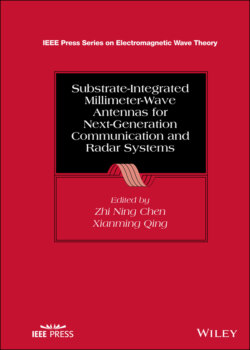Читать книгу Substrate-Integrated Millimeter-Wave Antennas for Next-Generation Communication and Radar Systems - Группа авторов - Страница 12
Foreword
ОглавлениеThere are now massive research articles and presentations on the design and analysis of millimeter wave antennas, providing evidence that the topic has reached an age of maturity. Professor Zhi Ning Chen and his colleagues and former graduate students have made significant contributions in this area for years. This book is very timely as many upcoming wireless systems will be operated at millimeter wave frequencies, including 5G mobile communications, collision avoidance systems for cars, autonomous control systems for unmanned aerial vehicles, satellite radar and communication systems, and so forth.
The readers will find the book coverage both wide and deep. After describing the details on the features of millimeter wave technology and unique challenges of antenna design as well as millimeter wave measurement techniques and experimental setups, various techniques for improving the performance of classical antennas for the operation at millimeter waves, realizing by LTCC technologies, are reviewed and disclosed. Those antenna designs include low‐profile substrate‐integrated waveguide slot antennas, broadband antenna arrays on metamaterials, substrate‐integrated cavity antennas, cavity‐backed substrate‐integrated waveguide slot antennas with large apertures, circularly polarized substrate integrated waveguide slot antennas, microstrip antennas with suppressed surface wave losses, substrate integrated antennas for automotive radars, and substrate edge radiating antennas. Pattern synthesizing techniques for achieving low sidelobe are also reviewed.
The book will have widespread appeal to practicing engineers, research scholars, and postgraduate students. I would like to congratulate Professor Zhi Ning Chen and his co‐authors on the production of this important text, which will be of great benefit to the antenna community globally.
Professor Kwai‐Man Luk FREng, FIEEE
City University of Hong Kong
